 Your new post is loading...
 Your new post is loading...
The best thinking about journalism’s future benefits from its being in touch with technology’s potential. But it can get in its own way when it simplifies and repudiates the intelligence of journalism’s past.
That is happening, to a degree, in a discussion gaining momentum lately that journalism should now largely move beyond fact gathering and toward synthesis and interpretation.
The NSA story is just the latest case that shows the importance, and the elusiveness, of simply knowing what has really happened.
In a Nieman Journalism Lab post, Jonathan Stray made the case recently for moving beyond facts, or what might be called The Displacement Theory of Journalism. “The Internet has solved the basic distribution of event-based facts in a variety of ways; no one needs a news organization to know what the White House is saying when all press briefings are posted on YouTube. What we do need is someone to tell us what it means.”...
Does working in PR make me a kissing cousin to Darth Vader? After all, I used to be a reporter – I was one of the hundreds of casualties...
... This is the reason why so many reporters are choosing to go into PR. We’re in the unique position of having been on the receiving end of countless press releases and pitches. Many of my former Herald colleagues are now doing PR work for both businesses and nonprofits. Some have started PR firms of their own. So, reading a recent Buffalo News article about TV reporters joining the PR ranks made me think about how annoying it is when I’m told I’ve “gone over to the dark side.” This is not Star Wars and it’s not that simple.
First and foremost, many of us simply reached the point where we needed a little more job stability than newspaper reporting could provide. Because right now most people working in print newsrooms are enduring increased workloads – picking up the slack after all the layoffs and resignations – while having their pay slashed....
Last Saturday I had the honor of teaching at a public writing conference at The Washington Post. After I finished my part of the program, I spent the day listening carefully to four of the Post’s most accomplished writers and reporters: David Finkel, Bob Woodward, DeNeen L. Brown, and Ezra Klein. I took copious notes, wrote down anything that struck me as wise or useful, and want to share with you what I learned from them. Please don’t take these as direct quotations, but as handwritten paraphrases containing the gist of their advice. Particularly notable were the shared values of craft and sense of mission and purpose in a gang of four that ranged from the 70-year-old Woodward, still cranking out books, to the young phenom Ezra Klein, who is trying to re-invent how to make policy stories interesting and relevant. I’ll take them in the order of their presentations...
Nieman Lab: The value of starting your own news brand — and sponsored content done right: http://t.co/Hq8uMsQ9nV #journo #journalism
The NYT’s multimedia project Snow Fall was a huge success, attracting big audiences and lots of plaudits. ...Snow Fall (and other such attempts) represent a great opportunity and the future for news organizations like The New York Times, especially as they are right now in a losing battle for attention with upstart competitors that include everyone from BuzzFeed to The Huffington Post. If you are the New York Times management, it is time to take a gamble: spend $25 million on creating 100 Snow Fall-like projects.... And in exchange, it got a few million page views, but I am guessing they also built a nice backend infrastructure to create more such projects. As a result, the next Snow Fall is going to cost less, with most future spending going to the creative: words, photos, other multimedia elements and design. So what will the Times (or someone like them) need to get it done? Simply put, a departure from the incumbent thinking, embracing today’s reality and re-imagining the work flow of a big city newspaper. In other words: Re-imagining its business model to factor in the reality of today’s world and forget the legacy of newsprint.Create a new breed of “producer” who can switch between Excel and content.Create a whole new breed of a journalist — one who has old-school values but also the ability to tell a story that works in many mediums of today.Build an editorial creative machine that works differently from a print-centric editorial group....
This is a collection of mobile resources from Mike Reilley and the Poynter Institute's Regina McCombs, Dave Stanton and Damon Kiesow, as well as many others. A list of mobile reporting tools appears at the end of this page. Most apps are tailored to the iPhone but have versions available for many other smart phones, too....
Twitter fills new editorial role with one the world's most innovative journalists.... Twitter has hired Simon Rogers, former news editor and data journalist at The Guardian, to be its first ever Data Editor. The position was created with the sole job of uncovering stories from tweets. Below is what Rogers wrote about his new job in a blog post: "Twitter has become such an important element in the way we work as journalists. It’s impossible to ignore, and increasingly at the heart of every major event, from politics to sport and entertainment. As data editor, I’ll be helping to explain how this phenomenon works. And I can’t imagine a better job than getting to tell stories based on some of the most amazing data around...."
“Will anyone with information please come forward”. It’s a refrain we always hear police echo in crime-dramas. People are too afraid to come forward though for lack of trust in the official authorities or fear of gangs. That’s especially in poverty-stricken, gang-ridden areas. You can easily imagine the classic scene: New York cops at a ghetto crime scene with apartment residents hiding behind their curtains. Then again, we are constantly documenting massive amounts of potential evidence each time we post a photo via Instagram, a video via Vine or even a report by sending out an ‘eyewitness tweet.’ How do we filter the valuable truth from the inevitable noise of social media?
For a time, Gabrielle Giffords was dead. So was Newtown, Connecticut, shooter Adam Lanza’s father. Or maybe it was his brother in Hoboken, New Jersey. All three, as we now know, are alive. Two of them weren’t even shot. On the other hand, the alleged Boston Marathon bomber is, actually, under arrest. Then he wasn’t. Then he was. How does the news get it so wrong? I’ve spent almost 20 years as a reporter and anchor and have covered more live, fast-breaking stories than I remember. Mistakes happen regularly on cable news because of the inexact and unreliable nature of rolling coverage. But most of the mistakes don’t matter: the exact color of the car, the exact price of the stock, the exact quote from the courtroom. Ultimately, they all get corrected, as rumor and speculation give way to provable fact and hard evidence. Most of the mistakes end up being of little consequence. But the details surrounding the Boston bomber mattered, because the nation was so heavily invested. Americans were on edge, their sense of safety shattered again. Public anxiety was at its height when the news of an arrest first came. The news, it turns out, was wrong. And this one didn’t fix itself....
A crowdsourced hunt for the bombers was unambiguously counterproductive ...There’s an art to working out where to find fast and reliable information, and to judging new information in light of old information, and to judging old information in light of new information. And there’s an art to synthesizing everything you know, from hundreds of different sources, into a single coherent narrative. It’s not easy, it’s not a skill that most people have, and it’s precisely where news organizations add value.
But in this particular case, as Noah Brier points out in a post headlined “Being Part of the Story”, it’s something that millions of people ended up attempting to do, on the fly, anyway: "Everyone wanted to be involved in “the hunt,” whether it was on Twitter and Google for information about the suspected bomber, on the TV where reporters were literally chasing these guys around, or the police who were battling these two young men on a suburban street. Watching the new tweets pop up I got a sense that the content didn’t matter as much as the feeling of being involved, the thrill of the hunt if you will. As Wasik notes, we’ve entered an age where how things spread through culture is more interesting than the content itself."
It’s no longer just journalists delivering information. With social media, the power of information-sharing now rests in the hands of everyday people.... "Contrary to conventional wisdom, one actually has more access to evidence with social media than traditional off-line sources." In some instances, perhaps this is a good thing. But this week, that "evidence" became fodder for hasty accusation, as Redditors attempted to crowdsource the investigation and identification of the Boston Marathon bombers. As the week played out, it became apparent the Reddit search would not trump the one led by authorities. Verification Required Unfiltered information, without context or verification — usually the job of journalists — can be dangerous, as Storyful founder Little points out: When I was a young TV journalist, the phrase ‘golden hour’ meant the early evening light that bathed faces and landscapes in a warm forgiving glow. As a social journalist, I've started to use the term in a different way. I now think of the golden hour as the time it takes social media to create either an empowering truth or an unstoppable lie, when a celebrity death trends on Twitter or an explosive video surfaces on YouTube. In other words, when journalism can matter most....
A lot is happening in Boston, just like a lot has happened in past months, including a lot of hype on the news, a lot of confusion, and the spread of quite some misinformation. But eventually, the chase ends, the investigations close, the who, what, where, when, and how get answered, and the why gets speculated over until everyone agrees on a narrative that can help us digest the horror. The journey involves a lot of hype, and lot of (digital and analog) talk around the coffee-machine, Facebook feeds and Twitter channels. Some people end up very hurt, some people cynical, some people apathetic, some people clueless, some people motivated to help however they can. So what can we take away from events like today in Boston? We can think about how we read about it. And in the era of everyone having a voice and a blog and the power to create content, it might help to think a little bit like a journalist....
Yesterday I quoted my old boss at the New Statesman. Today it’s Jon Snow, Channel 4 News presenter and Charlie Beckett who now runs Polis at the London School of Economics and was previously a programme editor at Channel 4 News. Both had interesting things to say about the evolution of news in the networked age. Both were talking heads in the final part of Steve Richards’ Making News series on Radio 4....
|
What's up with traditional media and what's buzzing in digital media? A very interesting analysis... It’s been a good week for old media. The Guardian, The Washington Post, The New York Times, and The Wall Street Journal have all done a superb job of reporting on the NSA/PRISM revelations. Unfortunately it has also been a terrible decade for them. Newspaper advertising revenue has fallen by more than half since 2007, and paywalls aren’t even coming close to covering that loss.Worse yet, nimbler competitors are doing their breakneck best to steal the audience…and they seem to be doing it well.
I recently got curious about how frequently various news sources are shared on social media, and since I couldn’t find any tool that measured quite what I wanted, I built one myself. (And I’ve spent like a hundred dollars on App Engine server costs amassing all of its data, so I hope you appreciate this.) The results were eye-opening.My handy-dandy tool, called Scanvine, tracks stories from a panoply of online sources, measures how often they’re shared, and compares and ranks them all. Guess what its leaderboard says as of this writing? None of the above are ranked in the top three. Nor the NYT, or the WSJ, or the New Yorker. Instead, third place goes to The Onion, with an average of 2000 shares per story; number two is Cracked, with 2700; and number one, at over 3000…is much-loathed BuzzFeed....
Reports on traditional news outlets, such as print and broadcast struggling to be financially viable. are nothing new. In a previous blog post, I quoted a statistic from IBM that claimed 90 per cent of all data has been created in the last two years alone.
With the rise of social media and the ability for anyone with access to a computer to create a blog, the supply of possible news sources has exploded since the web gained mainstream acceptance years ago. The public’s demand for content and news has dramatically increased. However, the exponential growth in supply of news sources such as social media, 24-hour news channels, and everything in between, has created a glut of information effectively driving down the value of real news. This is essentially a supply-and-demand problem. Combined with disruptive technology and better methodologies for advertising, traditional media outlets have been forced to make changes to the ways in which they report and monetize news content....
I am often asked what it takes to be a great reporter in the digital era. The essential mission, I say, remains the same: to observe, collect and interpret information. Don’t be a generalist; pick a subject, dig deep into it, bring “passion” to the job. That word evokes the obligatory question about objectivity. My response: journalism has always entailed biases, conscious or not. Next, a great reporter engages one-on-one with news consumers, joins social news streams, learns to be a marketer and plays with the technology. I end with this: understand the business models behind the profession — and start to think like an entrepreneur. FORBES has 1,000 writers learning and practicing all of that. Here are four who are leading the way...
When it comes to the traditional media business, there is often a pervasive nostalgia for “the good old days,” when a handful of newspapers and TV networks ruled over the media landscape and profitability was so taken for granted that huge family dynasties with names like Sulzberger and Bancroft were built on that foundation. Many media executives no doubt dream about magically returning to such a time. But what if those days were just an illusion — a kind of accident of history? What would that mean for the future of media? This idea has come up before, but I was reminded of it when I read a Nieman Journalism Lab post about some research being done by Lee Humphreys, looking at the way that communication — and particularly personal communication, through letters and diaries and other pre-digital tools of expression. Although this doesn’t seem to have much to do with how we use ultra-modern services like Twitter or Facebook, there is a lot more to it than you might think....
Evan Williams sees Medium, the blogging platform that he and Biz Stone launched last year, as a modern-day magazine. When Twitter cofounders Evan Williams and Biz Stone launched Medium last year, their goal was for it to be a collaborative publishing tool that connected writers to a larger network. But that vision also hinges on quality, curation and, in some ways, a higher barrier to entry than platforms like Twitter. “We’re going to be a great place for professional writers to write,” Williams told Wired senior writer Steven Levy at the Wired Business Conference in New York on Tuesday. “The magazine is the analog for what we’re doing.”
Twitter is a frenemy," said Jeff Zucker, CNN's new president, as reported by MediaShift. Jeff Zucker was describing the cable news network's relationship with social media and added, “the network uses, relies on -- and is scared by -- social media.” Twitter had a marquee moment last week, particularly late Friday afternoon and evening, that should scare most television news outlets in the business of reporting breaking news. That’s when Boston Marathon bombing suspect Dzhokhar Tsarnaev was cornered by police, trapped and almost bleeding to death inside a covered boat in a backyard in Watertown, Mass....
... You may have heard of Matthew Keys. He’s a journalist who was indicted by the Department of Justice (DoJ) for allegedly “giving hackers access to the servers of his former employer, the Tribune Company. Tribune owns the Los Angeles Times, which the Anonymous hacker subsequently defaced.” Keys was also, until recently, the social media editor for Reuters. After being let go today, he shared the news organization’s Twitter guidelines – and they demonstrate the dangers of combining personal and professional tweets online. In a blog post, Keys shares reasons why Reuters was mad at him (and fired him) and that list includes the following: "Reuters said it had a problem with the perceived relationship between my Twitter account and their news organization. A Reuters manager said it was troublesome that several people associated my work on Twitter with the company, pointing to my Twitter bio that said I was a Reuters journalist. Reuters’ Twitter Guidelines, which you can read here, states that Reuters journalists are always expected to identify themselves as such"....
The media industry may be hurting, but journalism -- and access to information -- is flourishing. Journalists may just have to work smarter, and network more, to keep up.... Journalism is not in crisis. The media industry — and journalists — might be, but the journalism itself is actually improving. Such is the argument made by international documentary filmmaker Bregtje van der Haak and Annenberg professors Michael Parks and Manuel Castells in a recently published article about “Networked Journalism.” As the authors see it, the problem is that most of the doomsayers mix the concept of journalism with the business of journalism. In their article, journalism is defined as the “production of reliable information and analysis needed for the adequate performance of a democratic society.” Not mentioned in the definition are “profits,” “professional journalists” or “traditional publishers.” Just the pursuit of reliable information....
Traditional news organizations need to embrace the disruption brought by digital culture -- or they risk becoming obsolete. That was the message late last week at the International Symposium on Online Journalism hosted by the Knight Center for Journalism in the Americas at the University of Texas at Austin, where about 370 of the world's journalists, researchers and media watchers grappled with the hard questions for a beleaguered traditional media industry that is now more than a decade into its disruptive transformation. The problem is many media companies view digital technologies through a lens of traditional journalism and thus, fail to strategize properly, said Clark Gilbert, president and CEO of Deseret News Publishing Company. "In a post-disruption world, why would people pick up a paper at all? Why would someone turn on the 10 o'clock newscast?" Gilbert asked. "If you are not asking those fundamental questions, there is not a future for you legacy organization." The key to surviving? Innovate. Fail. Innovate again....
When big news breaks, a common impulse is to turn to CNN, but the network suffers from self-inflicted damage. ...So what is the real damage of a midweek stumble in a very complicated story? When the story was breaking on Friday, CNN had its biggest nonelection rating in 10 years. People at CNN said that they got significant blowback from sources, but Mr. Zucker seemed fine with the overall effort, issuing a hero-gram to the staff on Friday, before the final chapter unfolded. “All of you, across every division of CNN Worldwide, have done exceptional work,” the memo read. “And when we made a mistake, we moved quickly to acknowledge it and correct it.” That’s one way to spin it. I talked to several competitors who did not commit the same error, and one spoke for many when he said: “It was bad enough — really, really bad — so that they made all of us look terrible. Nobody comes away a winner from something like this.” If legacy media were falling short, the new order did not look all that promising either. A crowd-sourced witch hunt took place on Reddit, identifying innocents as suspects, and Twitter was alive with both misinformation and outrage at the mistakes. (There were many curiously triumphal posts about the death of old media in Twitter feeds that were full of links to that same old media.)...
The week of the Boston bombings has been a cascade of embarrassments for the news industry. On Wednesday, CNN falsely reported that arrests had been made. The New York Post, never known as a pillar of journalist ethics, sunk to a new low with a front-page photo on Thursday of two young men, captioned, “Feds seek these two pictured at Boston marathon.” The only hitch: These weren’t the suspects. One of them says he’s now afraid to leave his house. But should these media fails really surprise us? Those who have been paying attention know that media bosses have been in a race to the bottom for over a decade. As journalist Nate Thayer describes it, “Not only have all the editors and others responsible for ensuring balanced and accurate story, which was crucial to ensuring believable information, been eliminated in budget cutbacks, but the more overwhelming new reality is the age of instant in the new borderless digital information age.”
Social media and journalism are back in the ring this week. They’re both pretty strong contenders, but not without their weaknesses. In the immortal words of Paulie Pennino, let’s blow these punch-outs. In this corner: Journalism As the underdogs trying to maintain a presence and a living wage, we all know journalists have the power of story-telling and, hopefully, credibility, when news breaks. This Nieman Lab post illustrates the timeline of breaking the Boston bombing on Monday. It shows social media users were able to catch events up to the minute, but it’s only when Reuters retweets it that it becomes News. That’s all because of context. Journalism takes its hardest blows when it forgets that its mission is to provide context. To keep up with social media, journos have fallen prey to the allure of being first. Cable news outlets broadcast, and then tweeted, information about the ongoing investigation and hunt for the bomber without verifying information. Instead of relying on their credibility, their only other strength, media outlets engaged in a strange feedback loo....
|



 Your new post is loading...
Your new post is loading...



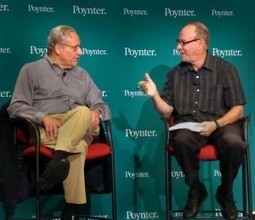



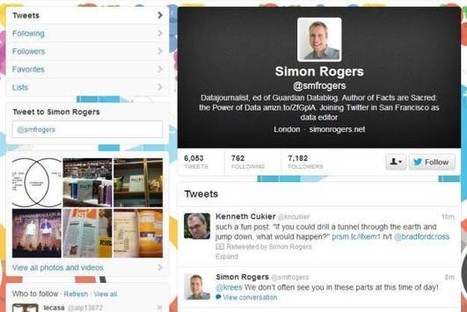









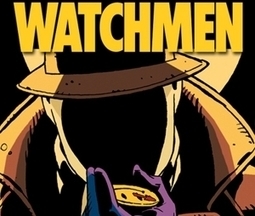




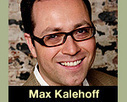


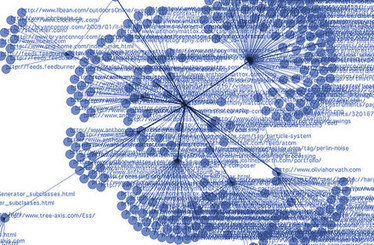

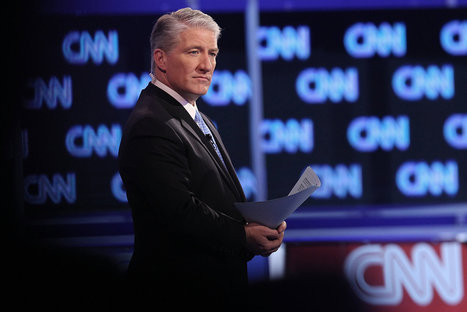








Thoughtful post from Tom Rosenstiel about the challenges of journalism and need for interpretation, context... Journalists need to do more than interpret the stream of nonsense in the social media channels whether from official sources or the public.